Is London bigger than Paris? Yes, London is significantly larger than Paris. This comprehensive comparison explores the size difference between London and Paris, offering insights into various aspects of these iconic cities. Looking for a detailed and objective comparison to make informed decisions? COMPARE.EDU.VN provides comprehensive comparisons between various options, including geographical area analysis and metropolitan area data.
1. Understanding the Scope of the Question: What Are We Comparing?
Before diving into the specifics of “How Big Is London Compared To Paris,” it’s crucial to define what we mean by “big.” Are we talking about geographical area, population, economic output, or something else entirely? For the purpose of this article, we will primarily focus on geographical area and population, while also touching upon other relevant aspects to provide a well-rounded comparison. Understanding the parameters of comparison is key to extracting meaningful insights.
2. Geographical Area: London vs. Paris
The most straightforward way to compare the size of London and Paris is by looking at their geographical area. Here’s a breakdown:
- London: Greater London covers an area of approximately 1,572 square kilometers (607 square miles). This includes the 32 boroughs that make up the city.
- Paris: The city of Paris, within its administrative limits, covers an area of approximately 105 square kilometers (41 square miles).
As you can see, London is significantly larger than Paris in terms of geographical area. To put it into perspective, London is about 15 times bigger than Paris. This difference in size has a significant impact on the urban landscape, population density, and overall character of each city.
3. Population: A Tale of Two Cities
While geographical area provides a clear indication of physical size, population is another crucial factor to consider when comparing the magnitude of London and Paris.
- London: The population of Greater London is approximately 9 million people (as of 2024).
- Paris: The population of the city of Paris is approximately 2.1 million people (as of 2024). However, the Paris metropolitan area, which includes the surrounding suburbs, has a population of over 12 million.
It’s important to note the distinction between the city of Paris and the Paris metropolitan area. While the city itself has a smaller population than London, the greater metropolitan area is larger. This is due to the fact that Paris has a more centralized administrative structure, while London is more decentralized, with each borough having its own local government.
4. Population Density: Where Do People Live?
Population density is a measure of how many people live in a given area. It can provide insights into the living conditions, urban planning, and overall feel of a city.
- London: The population density of Greater London is approximately 5,701 people per square kilometer (14,766 people per square mile).
- Paris: The population density of the city of Paris is approximately 21,000 people per square kilometer (54,000 people per square mile).
Paris has a significantly higher population density than London. This is due to its smaller geographical area and more centralized urban structure. The higher density contributes to the city’s vibrant street life, concentration of cultural attractions, and efficient public transportation system. In contrast, London’s lower density allows for more green spaces, suburban areas, and a greater variety of housing options.
5. Metropolitan Area: A Wider Perspective
When comparing cities, it’s essential to consider not just the city limits but also the surrounding metropolitan area. This gives a more comprehensive picture of the urban region and its overall influence.
- London Metropolitan Area: The London metropolitan area, also known as the Greater London Urban Area, has a population of over 14 million people. It includes the city of London and the surrounding areas that are economically and socially integrated.
- Paris Metropolitan Area: The Paris metropolitan area, also known as the Île-de-France, has a population of over 12 million people. It includes the city of Paris and its surrounding suburbs, which are heavily interconnected.
While London’s city population is higher, the Paris metropolitan area is a close contender. This highlights the importance of considering the broader urban region when comparing the size and scope of these two cities.
6. Economic Output: Comparing Economic Powerhouses
Beyond geographical area and population, economic output is another key indicator of a city’s size and influence. Both London and Paris are major economic centers, but how do they compare in terms of GDP and other economic indicators?
- London: London is one of the world’s leading financial centers, with a significant concentration of banks, insurance companies, and other financial institutions. The city’s GDP is estimated to be over $900 billion USD (as of 2024).
- Paris: Paris is also a major economic center, with a strong presence in industries such as fashion, luxury goods, and tourism. The city’s GDP is estimated to be over $700 billion USD (as of 2024).
London has a slightly larger GDP than Paris, reflecting its dominance in the global financial industry. However, both cities are major economic powerhouses that contribute significantly to their respective national economies.
7. Urban Sprawl: How Cities Grow
Urban sprawl refers to the expansion of a city’s boundaries into the surrounding rural areas. It’s a phenomenon that can have significant environmental, social, and economic consequences.
- London: London has experienced significant urban sprawl over the past century, with the city expanding outwards into the surrounding countryside. This has led to the development of suburban areas and commuter towns.
- Paris: Paris has also experienced urban sprawl, but to a lesser extent than London. The city has a more compact urban structure, with a greater emphasis on high-density housing and public transportation.
London’s greater urban sprawl is partly due to its decentralized administrative structure, which has allowed for more development in the outer boroughs. Paris, with its more centralized planning, has been able to contain urban sprawl to a greater extent.
8. Green Spaces: Parks and Recreation
Green spaces, such as parks and gardens, are essential for the quality of life in a city. They provide recreational opportunities, improve air quality, and enhance the overall aesthetic appeal of the urban environment.
- London: London is known for its many parks and green spaces, including Hyde Park, Regent’s Park, and Richmond Park. These parks provide a welcome respite from the hustle and bustle of city life.
- Paris: Paris also has its share of parks and gardens, such as the Jardin du Luxembourg, the Tuileries Garden, and the Parc de la Villette. However, Paris’s green spaces are generally smaller and more concentrated than those in London.
London’s larger geographical area allows for more extensive green spaces, which contribute to the city’s reputation as a green and livable urban center. Paris, with its higher population density, has had to make more efficient use of its green spaces, creating smaller but equally charming parks and gardens.
9. Transportation Infrastructure: Getting Around
Transportation infrastructure is crucial for the functioning of a modern city. A well-developed transportation system allows people to move easily between different parts of the city, promoting economic activity and social interaction.
- London: London has an extensive transportation network, including the London Underground (the world’s oldest subway system), buses, trains, and trams. The city is also served by several major airports, including Heathrow and Gatwick.
- Paris: Paris also has a well-developed transportation network, including the Paris Métro, buses, trains, and trams. The city is served by two major airports, Charles de Gaulle and Orly.
Both London and Paris have excellent public transportation systems, but they differ in their approach. London’s transportation system is more spread out, reflecting the city’s larger geographical area. Paris’s transportation system is more centralized, reflecting the city’s compact urban structure.
10. Cultural Attractions: Landmarks and Museums
Cultural attractions, such as landmarks, museums, and historical sites, are important for attracting tourists and enhancing the cultural identity of a city. Both London and Paris are renowned for their rich cultural heritage, but how do they compare in terms of their attractions?
- London: London is home to many world-famous landmarks, including the Tower of London, Buckingham Palace, the Houses of Parliament, and the British Museum.
- Paris: Paris is also home to many iconic landmarks, including the Eiffel Tower, the Louvre Museum, Notre-Dame Cathedral, and the Arc de Triomphe.
Both cities offer a wealth of cultural attractions, but they differ in their style and character. London’s attractions tend to be more historical and regal, while Paris’s attractions tend to be more romantic and artistic.
11. Housing: Styles and Costs
Housing is a major concern for residents of any city. The availability, affordability, and style of housing can have a significant impact on the quality of life.
- London: London offers a wide range of housing options, from traditional terraced houses to modern apartments. However, housing costs in London are among the highest in the world.
- Paris: Paris is known for its elegant apartment buildings, many of which date back to the 19th century. Housing costs in Paris are also high, but generally lower than those in London.
London’s housing market is more diverse than Paris’s, with a greater variety of styles and sizes. However, the high cost of housing in London can be a significant barrier for many residents. Paris offers a more uniform housing style, but its lower costs make it slightly more accessible.
12. Cost of Living: A Financial Perspective
The cost of living is a measure of how much it costs to maintain a certain standard of living in a particular city. It includes expenses such as housing, food, transportation, and entertainment.
- London: London is consistently ranked as one of the most expensive cities in the world. The high cost of housing is a major contributor to the city’s overall cost of living.
- Paris: Paris is also an expensive city, but generally less so than London. Housing costs are lower in Paris, but other expenses, such as food and entertainment, can be comparable.
The cost of living in both London and Paris is high compared to other cities in Europe and the world. However, London is generally considered to be more expensive than Paris, particularly when it comes to housing.
13. Comparing Suburbs: Beyond the City Center
When evaluating city size, it’s crucial to consider the suburbs, which often house a significant portion of the metropolitan population and contribute to the overall urban footprint.
- London: London’s suburbs are extensive, characterized by a mix of residential areas, green spaces, and commercial centers. They offer a more suburban lifestyle with larger homes and gardens compared to the city center.
- Paris: Paris’s suburbs, known as banlieues, vary significantly in character, ranging from affluent residential areas to densely populated, lower-income neighborhoods. The development of these suburbs has been a complex and often controversial topic.
The differences in suburban development reflect the distinct urban planning approaches of London and Paris. London’s suburbs are more integrated and diverse, while Paris’s suburbs have faced greater challenges in terms of social and economic integration.
14. Future Growth: How Will Cities Evolve?
Looking ahead, it’s important to consider how London and Paris are likely to grow and evolve in the future. This will depend on factors such as population growth, economic development, and urban planning policies.
- London: London is projected to continue growing in population and economic output in the coming years. However, the city also faces challenges such as increasing housing costs, traffic congestion, and environmental sustainability.
- Paris: Paris is also expected to grow in the future, but at a slower pace than London. The city is focused on sustainable development, with policies aimed at reducing carbon emissions, promoting public transportation, and preserving green spaces.
Both London and Paris face significant challenges as they continue to grow and evolve. However, they are also committed to creating more sustainable, livable, and prosperous urban environments for their residents.
15. Impact of Brexit: Implications for London
The United Kingdom’s decision to leave the European Union (Brexit) has had a significant impact on London, particularly in terms of its economy and international relations.
- London: Brexit has raised concerns about the future of London’s financial industry, as well as its ability to attract international talent. However, London remains a major global city, with a strong economy and a diverse population.
The long-term impact of Brexit on London is still uncertain, but it’s clear that the city will need to adapt to a new reality outside of the European Union.
16. Influence of the EU: Implications for Paris
As the capital of France, Paris has been deeply intertwined with the European Union since its inception. The city has benefited from EU policies such as free movement of people, goods, and capital.
- Paris: Paris has a strong voice in the EU, and the city is likely to continue playing a leading role in European affairs. However, the rise of nationalist and populist movements in Europe could pose challenges to the EU’s future.
Paris’s future is closely linked to the future of the European Union. The city will need to navigate the challenges and opportunities that arise as the EU continues to evolve.
17. Cultural Identity: London vs. Paris
London and Paris each possess distinct cultural identities that contribute to their global appeal and influence. These identities are shaped by history, art, architecture, cuisine, and the diverse populations that call these cities home.
- London: London’s cultural identity is a blend of tradition and modernity, characterized by its historical landmarks, vibrant arts scene, multicultural neighborhoods, and iconic symbols like the red telephone box and the black cab.
- Paris: Paris’s cultural identity is often associated with romance, elegance, and sophistication. The city is renowned for its world-class museums, haute couture fashion, exquisite cuisine, and architectural masterpieces like the Eiffel Tower and Notre-Dame Cathedral.
While both cities offer rich cultural experiences, they cater to different tastes and preferences. London attracts those seeking a dynamic, multicultural environment with a blend of history and innovation, while Paris appeals to those seeking a romantic, artistic atmosphere steeped in tradition and elegance.
18. Tourism: Attracting Visitors
Tourism plays a vital role in the economies of both London and Paris, attracting millions of visitors each year who contribute to local businesses and cultural institutions.
- London: London boasts a diverse range of tourist attractions, from historical landmarks like the Tower of London and Buckingham Palace to modern marvels like the Shard and the London Eye. The city also offers a vibrant theater scene, world-class museums, and a diverse culinary landscape.
- Paris: Paris is renowned for its iconic landmarks like the Eiffel Tower, Louvre Museum, and Notre-Dame Cathedral, as well as its charming streets, romantic ambiance, and haute couture fashion. The city also offers a rich culinary experience, with countless cafes, bistros, and Michelin-starred restaurants.
Both cities attract tourists from around the world, but they appeal to different demographics and interests. London attracts those seeking a mix of history, culture, and entertainment, while Paris appeals to those seeking a romantic, artistic, and culinary experience.
19. The Future of Urban Living: Lessons from London and Paris
London and Paris, as leading global cities, offer valuable insights into the future of urban living. Their experiences in managing population growth, promoting sustainability, and preserving cultural heritage can serve as models for other cities around the world.
- London: London is focused on creating a more sustainable and resilient urban environment, with initiatives aimed at reducing carbon emissions, promoting public transportation, and improving air quality. The city is also investing in smart city technologies to improve efficiency and quality of life.
- Paris: Paris is committed to creating a more livable and inclusive urban environment, with policies aimed at promoting affordable housing, reducing inequality, and enhancing public spaces. The city is also investing in green infrastructure, such as parks and green roofs, to improve the environmental quality of life.
By learning from the successes and challenges of London and Paris, other cities can better prepare for the future and create more sustainable, livable, and prosperous urban environments for their residents.
20. Key Differences: London vs. Paris in a Nutshell
To summarize the key differences between London and Paris, here’s a table highlighting the main points:
| Feature | London | Paris |
|---|---|---|
| Geographical Area | Approximately 1,572 square kilometers (607 square miles) | Approximately 105 square kilometers (41 square miles) |
| Population | Approximately 9 million (city) / 14 million (metropolitan area) | Approximately 2.1 million (city) / 12 million (metropolitan area) |
| Population Density | Approximately 5,701 people per square kilometer (14,766 people per square mile) | Approximately 21,000 people per square kilometer (54,000 people per square mile) |
| Economic Output (GDP) | Over $900 billion USD | Over $700 billion USD |
| Urban Sprawl | More extensive | Less extensive |
| Green Spaces | More extensive | More concentrated |
| Transportation | More spread out | More centralized |
| Cultural Attractions | Historical and regal | Romantic and artistic |
| Housing | Diverse styles, high costs | Uniform style, high costs (but generally lower than London) |
| Cost of Living | Higher | High, but generally lower than London |

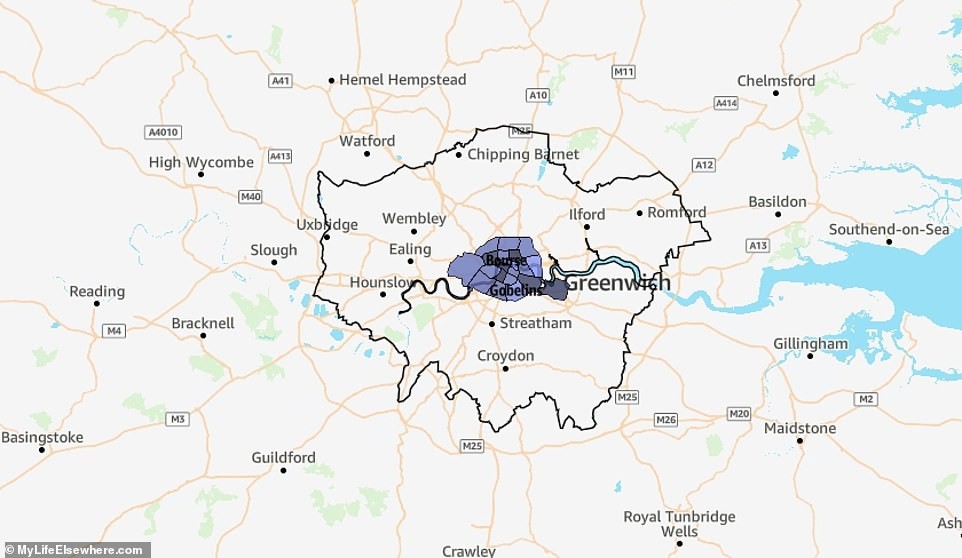
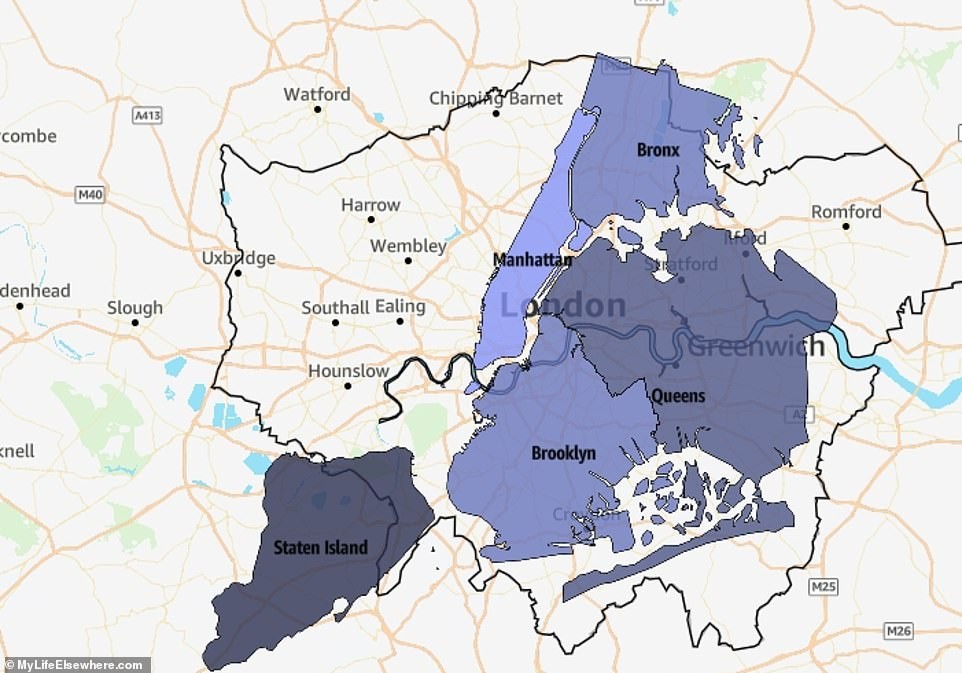
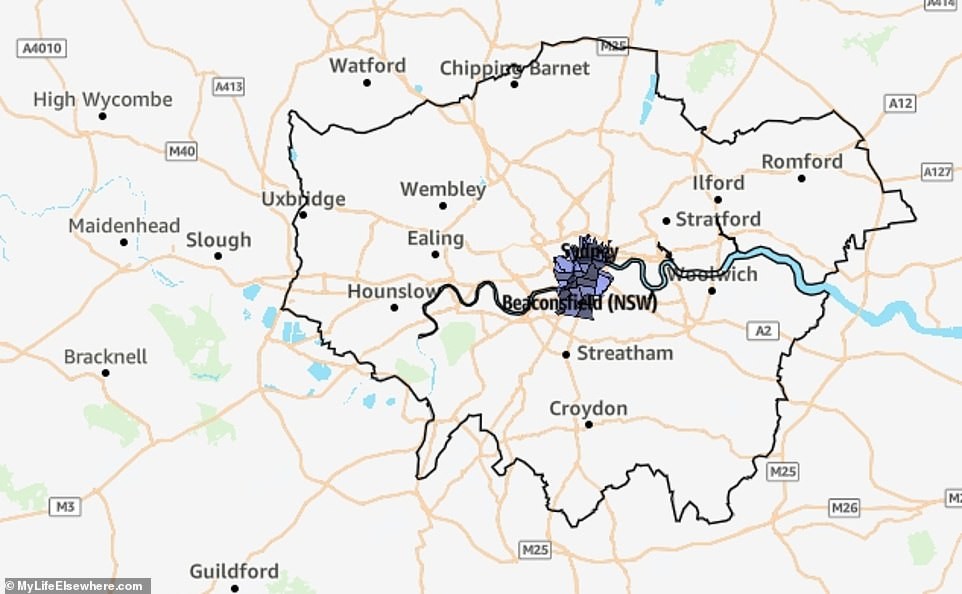
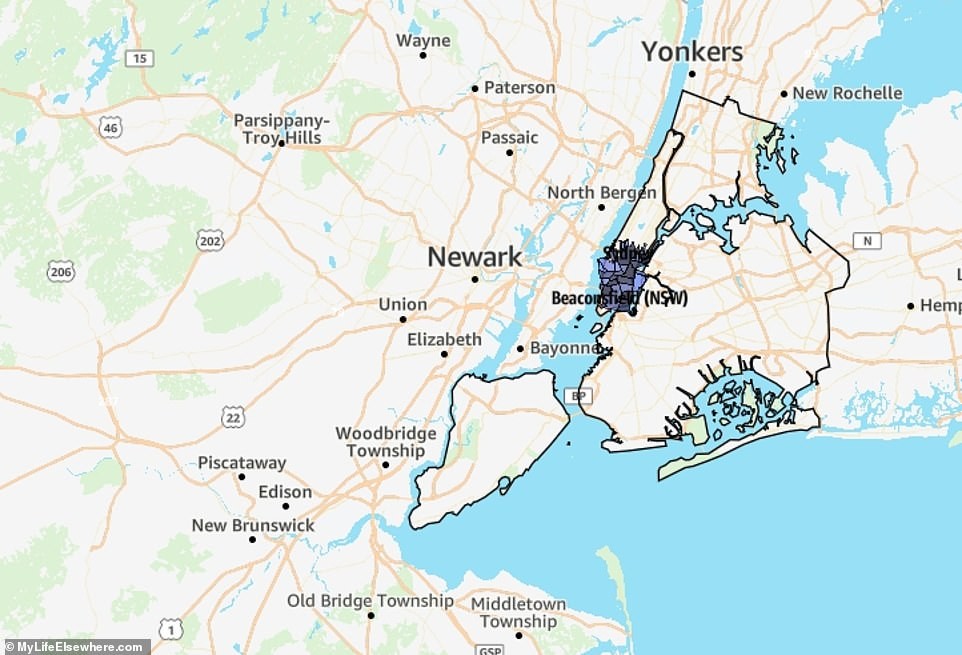
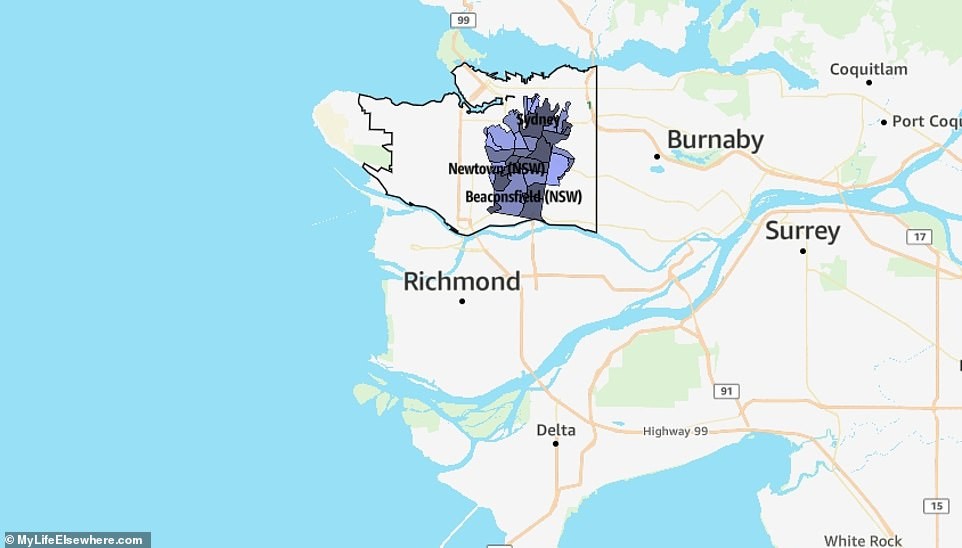
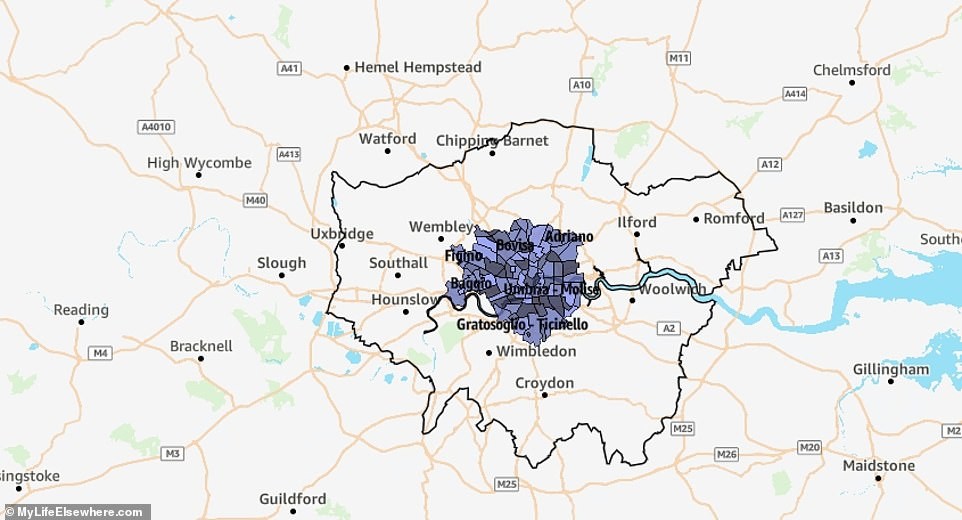
21. London vs. Paris: Which City Is Right for You?
Ultimately, the choice between London and Paris depends on your individual preferences, priorities, and lifestyle. Both cities offer unique experiences and opportunities, but they cater to different tastes.
- Choose London if: You prefer a dynamic, multicultural environment with a blend of history and innovation. You enjoy extensive green spaces, diverse housing options, and a wide range of cultural attractions. You are willing to pay a higher cost of living for these benefits.
- Choose Paris if: You prefer a romantic, artistic atmosphere steeped in tradition and elegance. You appreciate a compact, walkable city with a centralized transportation system and world-class museums. You are looking for a slightly more affordable cost of living than London.
22. How London’s Size Affects Commuting
The sheer size of London significantly impacts the daily commute for its residents. With a larger geographical area, travel distances tend to be longer, influencing transportation choices and commuting times.
- Longer Commute Times: On average, Londoners spend more time commuting compared to Parisians. This is due to the greater distances between residential areas and workplaces, especially for those living in the outer boroughs.
- Reliance on Public Transportation: London’s extensive public transportation network, including the Underground, buses, and trains, is crucial for navigating the city’s vastness. Many commuters rely on a combination of these modes to reach their destinations.
- Impact on Work-Life Balance: The longer commute times can affect work-life balance, as individuals spend a significant portion of their day traveling. This has led to increased interest in flexible work arrangements and remote work opportunities.
Understanding the impact of London’s size on commuting is essential for anyone considering living or working in the city. Planning your commute carefully and exploring different transportation options can help mitigate the challenges and maximize your quality of life.
23. How Paris’s Compactness Fosters Community
The compact nature of Paris fosters a strong sense of community among its residents. With shorter distances between neighborhoods and a higher population density, Parisians often experience a more connected and vibrant urban life.
- Walkability: Paris is known for its walkability, with many residents choosing to walk or cycle for their daily commutes and errands. This promotes a sense of community and allows for chance encounters with neighbors and local businesses.
- Local Businesses: The compact urban structure supports a thriving network of local businesses, including cafes, bakeries, and boutiques. These businesses serve as community hubs, where residents gather and interact with one another.
- Neighborhood Identity: Each neighborhood in Paris has its own distinct identity and character, fostering a sense of belonging and pride among its residents. This contributes to the city’s overall sense of community and cultural richness.
The compactness of Paris creates a unique urban environment that promotes community, walkability, and a strong connection to local businesses and neighborhoods.
24. Contrasting Architectural Styles: London and Paris
The architectural styles of London and Paris reflect their distinct histories, cultures, and urban planning approaches. These styles contribute to the unique character and aesthetic appeal of each city.
- London: London’s architecture is a mix of historical and modern styles, ranging from Victorian terraces and Georgian townhouses to contemporary skyscrapers and innovative designs. This eclectic mix reflects the city’s dynamic and evolving nature.
- Paris: Paris’s architecture is characterized by its elegant and harmonious style, with many buildings dating back to the 19th century. The city’s iconic Haussmannian buildings, with their uniform facades and ornate details, contribute to its romantic and sophisticated atmosphere.
The contrasting architectural styles of London and Paris offer a visual representation of their distinct cultural identities and urban planning philosophies. London’s eclectic mix reflects its dynamic and evolving nature, while Paris’s harmonious style embodies its elegance and sophistication.
25. Impact on Business and Commerce
The size and structure of London and Paris have a significant impact on their business and commercial environments. These factors influence everything from office space availability and transportation infrastructure to networking opportunities and industry concentrations.
- London: London’s larger geographical area provides more opportunities for business expansion and development. The city’s decentralized structure allows for a greater variety of office spaces and commercial districts. London’s status as a global financial center attracts a diverse range of industries and talent.
- Paris: Paris’s compact urban structure can make it more challenging to find affordable office space, but it also fosters a sense of proximity and collaboration among businesses. The city’s strong presence in industries like fashion, luxury goods, and tourism creates a unique commercial environment.
The distinct characteristics of London and Paris influence the types of businesses that thrive in each city and the ways in which they operate.
26. Quality of Life Comparison: London and Paris
Quality of life is a subjective measure that encompasses various factors, including safety, healthcare, education, environment, and cultural amenities. Comparing the quality of life in London and Paris requires considering these factors and how they align with individual preferences.
- London: London offers a high quality of life for many residents, with access to world-class healthcare, education, and cultural institutions. The city’s diverse population and vibrant arts scene contribute to its appeal. However, London also faces challenges such as high housing costs, traffic congestion, and air pollution.
- Paris: Paris is renowned for its high quality of life, with excellent healthcare, education, and cultural amenities. The city’s beautiful parks, charming streets, and rich culinary scene contribute to its appeal. However, Paris also faces challenges such as high population density, income inequality, and occasional social unrest.
The perceived quality of life in London and Paris depends on individual priorities and values. Some may prioritize London’s diversity and economic opportunities, while others may prefer Paris’s beauty and cultural richness.
27. Environmental Considerations: Sustainability in London and Paris
As global cities, London and Paris face significant environmental challenges, including air pollution, carbon emissions, and waste management. Both cities are committed to promoting sustainability and reducing their environmental impact.
- London: London has implemented various initiatives to improve air quality, promote public transportation, and reduce carbon emissions. The city is also investing in green infrastructure, such as parks and green roofs, to enhance its environmental resilience.
- Paris: Paris is focused on creating a more sustainable and eco-friendly urban environment, with policies aimed at promoting cycling, reducing car traffic, and increasing green spaces. The city is also investing in renewable energy sources and energy-efficient buildings.
The environmental sustainability of London and Paris is crucial for ensuring the well-being of their residents and contributing to global efforts to combat climate change.
28. The Role of Each City in the Global Economy
London and Paris play distinct but crucial roles in the global economy, serving as major centers for finance, commerce, culture, and innovation. Their influence extends far beyond their national borders, shaping global trends and influencing international relations.
- London: London is a leading global financial center, attracting international banks, insurance companies, and investment firms. The city’s strong economy and diverse talent pool contribute to its global influence.
- Paris: Paris is a major center for fashion, luxury goods, tourism, and culture, attracting visitors and businesses from around the world. The city’s strong presence in these industries contributes to its global reputation and economic influence.
The distinct roles of London and Paris in the global economy reflect their unique strengths and specializations.
29. Making an Informed Decision: COMPARE.EDU.VN
Choosing between London and Paris is a personal decision that depends on individual priorities and preferences. However, having access to accurate and comprehensive information is crucial for making an informed decision.
That’s where COMPARE.EDU.VN comes in. Our website provides detailed comparisons of various aspects of London and Paris, including geographical area, population, cost of living, quality of life, and cultural attractions. We also offer insights into the unique characteristics and challenges of each city, helping you make the right choice for your needs.
30. FAQs: Your Questions Answered
Here are some frequently asked questions about the size and characteristics of London and Paris:
-
Is London really that much bigger than Paris? Yes, London is significantly larger than Paris in terms of geographical area. London is about 15 times bigger than Paris.
-
Which city has a higher population density? Paris has a much higher population density than London.
-
Is it more expensive to live in London or Paris? London is generally considered to be more expensive than Paris, particularly when it comes to housing.
-
Which city has more green spaces? London has more extensive green spaces than Paris.
-
Which city is better for tourists? Both cities are great for tourists, but they offer different experiences. London is more historical and diverse, while Paris is more romantic and artistic.
-
How does Brexit affect London? Brexit has raised concerns about London’s economy and international relations, but the city remains a major global center.
-
What are the main industries in London? London’s main industries include finance, commerce, and technology.
-
What are the main industries in Paris? Paris’s main industries include fashion, luxury goods, tourism, and culture.
-
Which city has a better transportation system? Both cities have excellent transportation systems, but London’s is more spread out, while Paris’s is more centralized.
-
Where can I find more information about comparing cities? Visit COMPARE.EDU.VN for detailed comparisons and insights into various cities around the world.
Ready to explore more city comparisons? Visit COMPARE.EDU.VN today!
At COMPARE.EDU.VN, we understand the challenges of comparing different options objectively. That’s why we strive to provide comprehensive and unbiased comparisons to help you make informed decisions.
Don’t let indecision hold you back. Visit COMPARE.EDU.VN now and discover the perfect choice for you
Address: 333 Comparison Plaza, Choice City, CA 90210, United States
Whatsapp: +1 (626) 555-9090
Website: compare.edu.vn